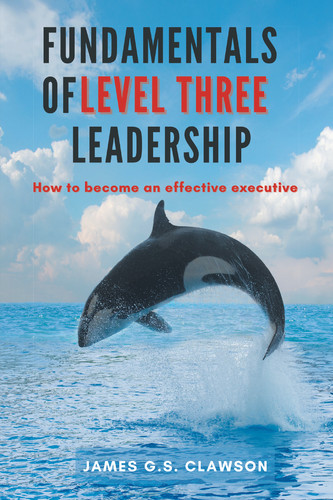Concept
Leaders set the tone for diverse inclusion. Leaders like everyone else have VABEs that shape their views on diversity, inclusiveness, and the value of engaging people who aren’t like them. In my view, leaders should make decisions based on merit and morality. The natural tendency for all humans is to be more open to people who are like them.59 John Bradley, formerly of JPMorgan Chase, once noted that “A system left to its own devices will recreate itself.” Let’s assert this as a natural human tendency— but one that has a number of negative consequences.
First, this tendency builds boundaries and enmity between groups. Lack of understanding leads to speculation and rumor mongering.
Second, this tendency precludes all groups from learning from and benefitting from the insights and traditions of the others.
Third, this tendency produces internal schisms and distrust that can lead to disruption and chaos.
Fourth, this tendency precludes the development of larger business activity that transcends the boundaries.
Fifth, this tendency abrades a reasonable analysis of the values of fairness.
You may be able to think of additional pitfalls to the preservation of non-merit based biases and prejudices.
If executives are truly willing to engage merit and talent and value, they will take an open-minded and diversity engaging view of the world. See the chapters on global leadership introduced earlier.
One of the first issues that comes up in discussions of diversity is proportional representation. If there are 50 percent women in a society, the argument goes, there should be 50 percent representation in business leadership. We know, however, that the world is moving slowly, one can easily argue too slowly, from a male dominated global society toward a more gender balanced, fairer society.
The Institute for Women’s Policy Research notes that while 50 percent of the American workforce is female, and while more women get college degrees than men, men are still paid more for equivalent work and that gap is 20 percent or more.60 The IWPR also predicts that the gender wage gap will not close until at least 2059 for white women, 2233 for Hispanic women and 2124 for black women. Should a person be paid similarly for similar work? That would be fair.
The results for racial minorities is no better. Fortune reports that there have only been 15 black CEOs among the Fortune 500.61 They also report that blacks hold only 6.7 percent of the 16.2 million management jobs in the United States. Despite billions spent on diversity training, old biases and prejudices seem to continue to block the advancement of qualified women and racial minorities.
Malcom Gladwell’s work on thin slicing,62 and research on stereotyping63 suggest that people make judgments about others in split-seconds. Anciently, this may have been beneficial to survival; today, non-merit based quick judgments have become unfair and unjust and dysfunctional.
Effective executives who understand the value of diverse opinions and viewpoints and want to avoid the pitfalls mentioned above will work hard to include diverse demographics, diverse viewpoints, and diverse expertise in their strategic councils. Window-dressing won’t be enough. They will also have to listen to and engage those voices. And make decisions with them.
Diversity for diversity’s sake may have a benefit of creating the appearance of fairness, but the true benefits of diversity and diverse thinking won’t accrue unless the executive values multi-faceted points of view. Most just don’t. In the end, those who eschew diversity end up in self-defeating group-think.64
Clearly, one cannot begin to explore the issues in leadership’s influence on diversity and fairness in a couple of pages. We can point to the importance of leadership’s influence on merit-based systems within their organizations and challenge you to become more aware of how your decisions may lead you to recreate yourself rather than to create a more diverse and more functional you/organization going forward.
Example
Reuter’s has developed a Diversity & Inclusion Index (D&I) to spotlight firms that are leading the way in capitalizing on diversity in their organizations.65 The 2016 list included Clorox, Microsoft, Proctor & Gamble, Cisco, Colgate-Palmolive, Eli Lilly, and at #1, Johnson & Johnson. Reuter’s publishes a D&I score for companies based on a number of factors including supplier diversity programs, training programs, mentor-protégé programs, participation in gender and minority networks, and leadership behavior (e.g., John Chambers at Cisco required all managers to read Sheryl Sandberg’s Lean In book).
Martin Davidson’s book, The End of Diversity as We Know It, has influenced many managers to rethink the way they approach managing diversity and changing their corporate cultures.66 Davidson argues for a shift in the way managers think of diversity from managing it to leveraging it for the benefit of their organizations.

Source: John Bradley, JPMC
Challenge
1. Describe the merits of the women you work with.
2. Describe the merits of the minorities you work with.
3. Describe the degree of diversity in your organization.
4. What could you do to improve the way your organization deals with diversity?
5. What could you do to be more inclusive in your behavior? What VABEs would you have to change in order to do this?
59 Byrne, B. 1997. “An Overview (and Underview) of Research and Theory within the Attraction Paradigm.” Journal of Social and Personal Relationships.
60 https://iwpr.org/issue/employment-education-economic-change/pay-equity-discrimination/?gclid=Cj0KCQiAgs7RBRDoARIsANOo-HiEC02v6Fdk-CIqlyrB6qiPGiRYaZ5_vE3I4V4uWs-xVTL-SxywqJHYaAlvDEALw_wcB
61 http://fortune.com/black-executives-men-c-suite/
62 Gladwell, M. 2007. Blink: The Power of Thinking Without Thinking. Back Bay, Boston.
63 For a broad overview, see Wikipedia: https://en.wikipedia.org/wiki/Stereotype
64 See Wilcox, C. 2010. Groupthink: An Impediment to Success. Xlibris.
65 http://businessinsider.com/here-are-the-top-7-most-diverse-and-inclusive-companies-in-the-us-2016-9
66 Davidson, M. 2011. The End of Diversity as We Know It: Why Diversity Efforts Fail and How Leveraging Diversity Can Succeed. Berrett-Kohler.
